Affiliate links on Android Authority may earn us a commission. Learn more.
Snapdragon SoC guide: All of Qualcomm's smartphone processors explained
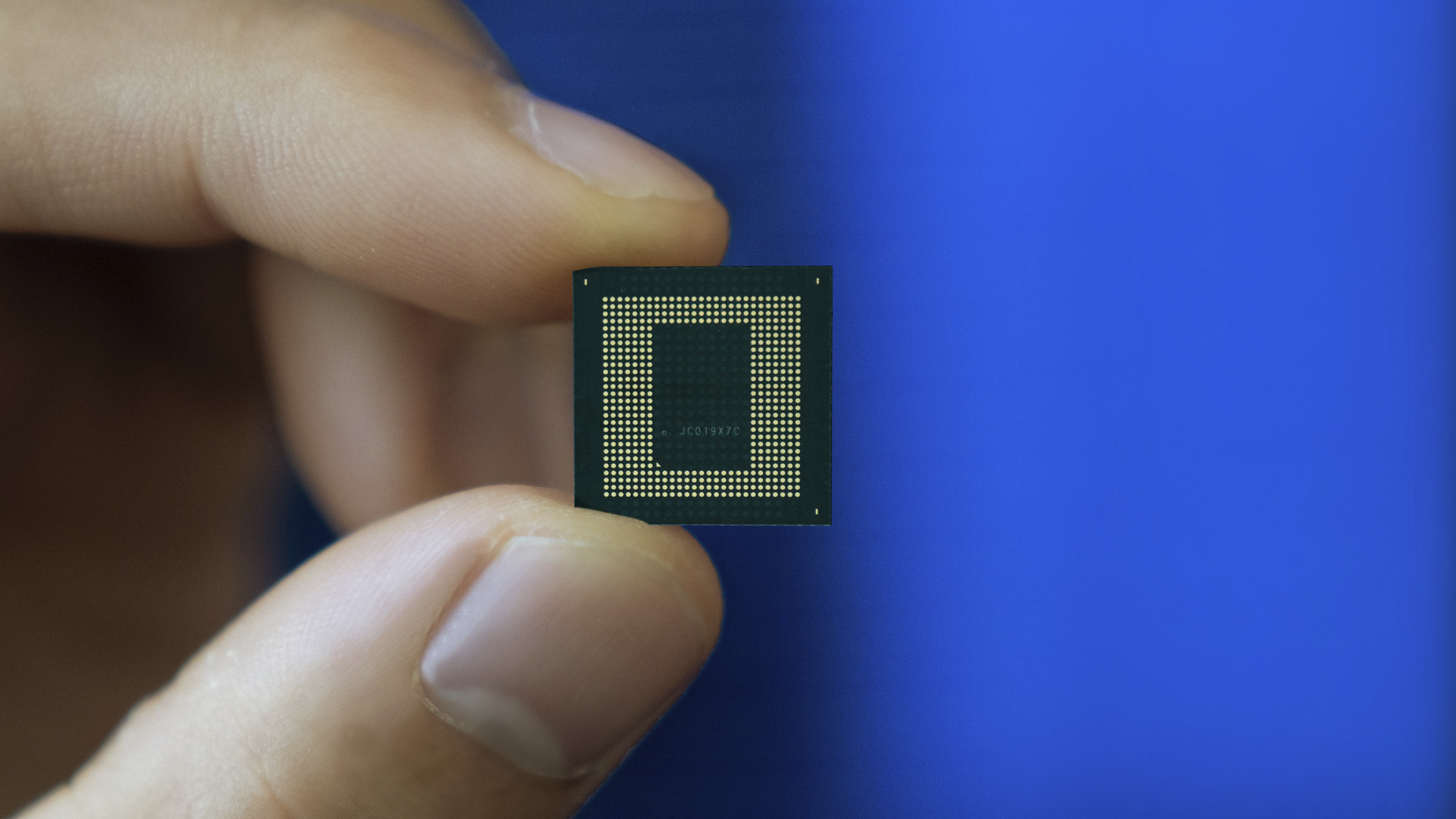
Qualcomm’s Snapdragon processors are among the most ubiquitous SoCs in the Android smartphone space. Samsung uses Snapdragon for its Galaxy S line in various markets, but these chips also power the vast majority of flagship Android phones on the market. There’s a good chance that you’re reading this on a device using a Qualcomm Snapdragon processor right now.
Snapdragon chips aren’t just found in expensive flagship smartphones though. There’s a whole portfolio of processors built for handsets at various price points. Performance and features differ a fair bit between these models, so let’s break down how the company’s latest SoCs compare and what capabilities you should expect.
Snapdragon 8 series — Premium tier
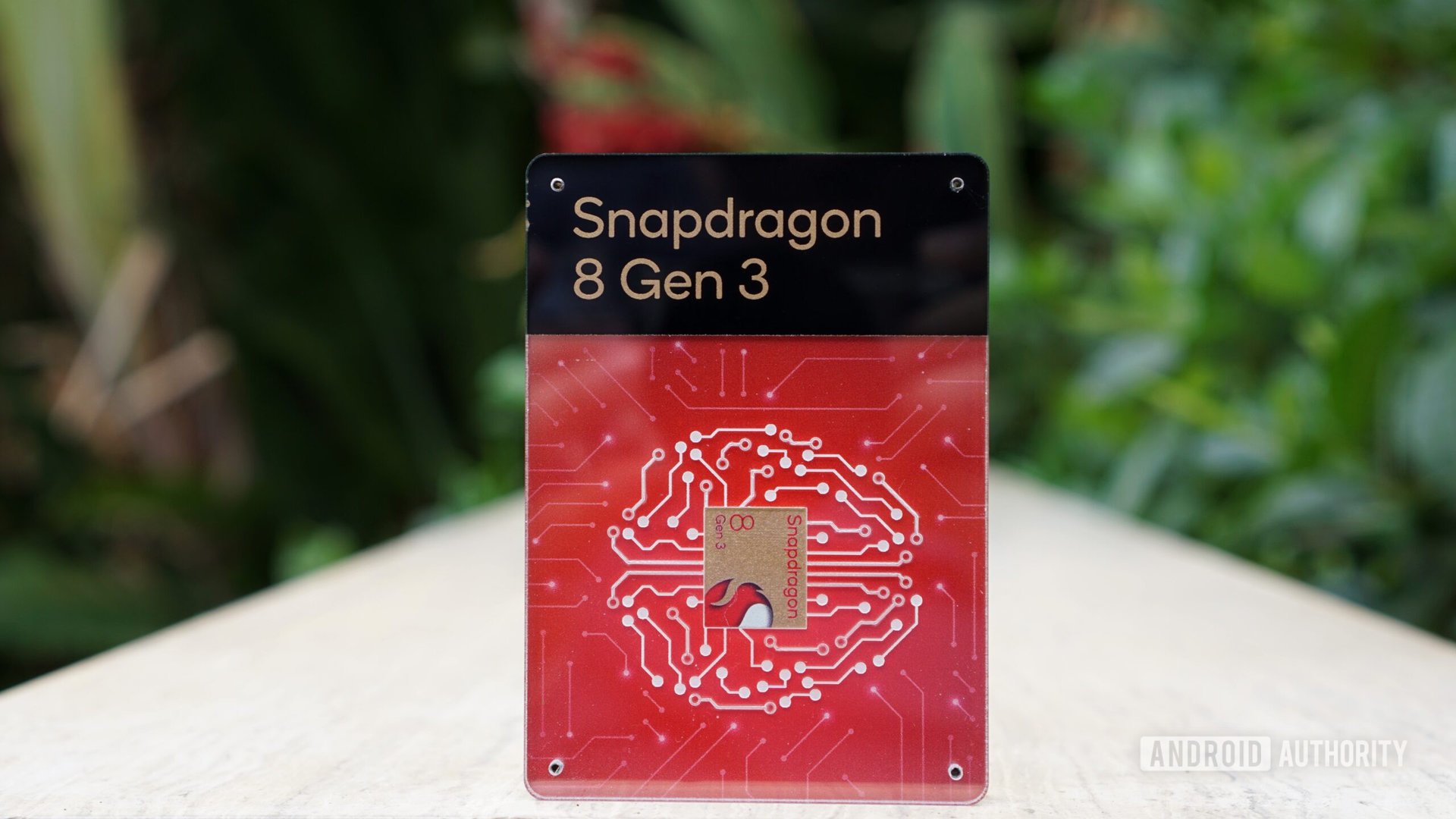
Looking for the very best Qualcomm smartphone processor family? That will be the Snapdragon 8 range. The latest chip is the Snapdragon 8 Gen 3, which was announced in October 2023. It’s a brand-new release that’s only appeared in the Xiaomi 14 series as of writing. But it’s expected to power a ton of flagship phones in 2024.
The Snapdragon 8 Gen 3 brings a host of upgrades. For one, it packs a super-powerful CPU on paper. This is a 1+5+2 CPU consisting of one Cortex-X4 core, five Cortex-A720 cores, and two Cortex-A520 cores. In fact, Qualcomm says it’s 30% faster than its predecessor while being 20% more efficient.
The Snapdragon 8 Gen 3 is built with on-device generative AI tasks in mind.
Qualcomm is also going all-in on generative AI capabilities this time out, offering text-to-image generation in under a second, photo expansion capabilities (using image generation to expand the borders of an image), and support for large language models with over 10 billion parameters running at close to 15 tokens per second. In plain English, this is an AI powerhouse.
Other upgrades worth knowing include an Adreno GPU that’s 25% faster and 25% more efficient, support for global illumination graphics tech, night mode video support, and video object eraser capabilities.
| Snapdragon 8 Gen 3 | Snapdragon 8 Gen 2 | Snapdragon 8 Gen 1 | Snapdragon 8 Plus Gen 1 | |
|---|---|---|---|---|
CPU Config | Snapdragon 8 Gen 3 1x 3.3GHz (Cortex-X4) 3x 3.2GHz (Cortex-A720) 2x 3GHz (Cortex-A720) 2x 2.3GHz (Cortex-A520 Refresh) | Snapdragon 8 Gen 2 1x 3.19GHz (Cortex-X3) 2x 2.8GHz (Cortex-A715) 2x 2.8GHz (Cortex-A710) 3x 2.0GHz (Cortex-A510) | Snapdragon 8 Gen 1 1x 3GHz (Cortex-X2) 3x 2.5GHz (Cortex-A710) 4x 1.8GHz (Cortex-A510) | Snapdragon 8 Plus Gen 1 1x 3.2GHz (Cortex-X2) 3x 2.5GHz (Cortex-A710) 4x 1.8GHz (Cortex-A510) |
GPU | Snapdragon 8 Gen 3 Adreno (ray tracing support) | Snapdragon 8 Gen 2 Adreno 740 (ray tracing support) | Snapdragon 8 Gen 1 Adreno 730 | Snapdragon 8 Plus Gen 1 Adreno 730 |
DSP | Snapdragon 8 Gen 3 Hexagon (fused scalar, tensor, and vector) Mixed precision INT8/INT16 INT4 support | Snapdragon 8 Gen 2 Hexagon (fused scalar, tensor, and vector) Mixed precision INT8/INT16 INT4 support | Snapdragon 8 Gen 1 Hexagon (fused scalar, tensor, and vector) Mixed precision INT8/INT16 | Snapdragon 8 Plus Gen 1 Hexagon (fused scalar, tensor, and vector) Mixed precision INT8/INT16 |
RAM support | Snapdragon 8 Gen 3 LPDDR5X | Snapdragon 8 Gen 2 LPDDR5X | Snapdragon 8 Gen 1 LPDDR5 | Snapdragon 8 Plus Gen 1 LPDDR5 |
Camera support | Snapdragon 8 Gen 3 • 200MP single shot • 108MP single with zero shutter lag • 64MP+36MP with zero shutter lag • Triple 36MP with zero shutter lag • Hybrid AF • 10-bit HEIF image capture • HDR video • Dolby HDR photo • Multi-frame noise reduction • Real-time semantic segmentation for photos and videos (up to 12 layers) • Video super resolution | Snapdragon 8 Gen 2 • 200MP single shot • 108MP single with zero shutter lag • 64MP+36MP with zero shutter lag • Triple 36MP with zero shutter lag • Hybrid AF • 10-bit HEIF image capture • HDR video • Multi-frame noise reduction • Real-time semantic segmentation for photos and videos (up to 8 layers) • Video super resolution | Snapdragon 8 Gen 1 • 200MP single shot • 108MP single with zero shutter lag • 64MP+36MP with zero shutter lag • Triple 36MP with zero shutter lag • Hybrid AF • 10-bit HEIF image capture • HDR video • Multi-frame noise reduction • Real-time object classification, segmentation, and replacement • Video super resolution | Snapdragon 8 Plus Gen 1 • 200MP single shot • 108MP single with zero shutter lag • 64MP+36MP with zero shutter lag • Triple 36MP with zero shutter lag • Hybrid AF • 10-bit HEIF image capture • HDR video • Multi-frame noise reduction • Real-time object classification, segmentation, and replacement • Video super resolution |
Video capture | Snapdragon 8 Gen 3 8K @ 30fps (HDR) 4K UHD @ 120fps 720p @ 960fps Night Vision Video Capture (4K/60fps) | Snapdragon 8 Gen 2 8K @ 30fps (HDR) 4K UHD @ 120fps 720p @ 960fps | Snapdragon 8 Gen 1 8K @ 30fps (HDR) 4K UHD @ 120fps 720p @ 960fps | Snapdragon 8 Plus Gen 1 8K @ 30fps (SDR) 4K UHD @ 120fps 720p @ 960fps |
Charging | Snapdragon 8 Gen 3 Quick Charge 5 | Snapdragon 8 Gen 2 Quick Charge 5 | Snapdragon 8 Gen 1 Quick Charge 5 | Snapdragon 8 Plus Gen 1 Quick Charge 5 |
4G/5G Modem | Snapdragon 8 Gen 3 X75 LTE/5G (integrated) 10,000Mbps down 3,500Mbps up | Snapdragon 8 Gen 2 X70 LTE/5G (integrated) 10,000Mbps down 3,500Mbps up | Snapdragon 8 Gen 1 X65 LTE/5G (integrated) 10,000Mbps down | Snapdragon 8 Plus Gen 1 X65 LTE/5G (integrated) |
Other networking | Snapdragon 8 Gen 3 Bluetooth 5.4 Wi-Fi 7, Wi-Fi 6/6E (802.11ax), Wi-Fi 5 (802.11ac), 802.11a/b/g/n | Snapdragon 8 Gen 2 Bluetooth 5.3 Wi-Fi 7, Wi-Fi 6/6E (802.11ax), Wi-Fi 5 (802.11ac), 802.11a/b/g/n | Snapdragon 8 Gen 1 Bluetooth 5.2 Wi-Fi 6/6E (802.11ax), Wi-Fi 5 (802.11ac), 802.11a/b/g/n | Snapdragon 8 Plus Gen 1 Bluetooth 5.3 Wi-Fi 6/6E (802.11ax), Wi-Fi 5 (802.11ac), 802.11a/b/g/n |
Process | Snapdragon 8 Gen 3 TSMC 4nm (N4P) | Snapdragon 8 Gen 2 TSMC 4nm (N4?) | Snapdragon 8 Gen 1 Samsung 4nm | Snapdragon 8 Plus Gen 1 TSMC 4nm |
The Snapdragon 8 Gen 3’s predecessor is the Snapdragon 8 Gen 2, and most of 2023’s flagship Android phones are powered by this chip. It’s still a beast, bringing a powerful 1+4+3 CPU, a top-class GPU, and upgrades in plenty of other areas.
We also still see phones with 2022’s Snapdragon 8 Gen 1 and 8 Plus Gen 1 chips. In fact, the latter chip is used inside quite a few upper mid-range phones.
The Galaxy S23 series debuted with a partnership between Samsung and Qualcomm, resulting in the Snapdragon 8 Gen 2 for Galaxy chip. It offers slightly higher CPU and GPU clock speeds compared to the vanilla chip. That may translate to better performance in demanding tasks like gaming and video editing.
Notable Snapdragon 8 series phones
- OnePlus 11
- POCO F5 Pro
- Samsung Galaxy S23 series
- Samsung Galaxy Z Flip 5
- Samsung Galaxy Z Fold 5
- Xiaomi 13 series
- Xiaomi 14 series
Snapdragon 7 series — Bridging the gap
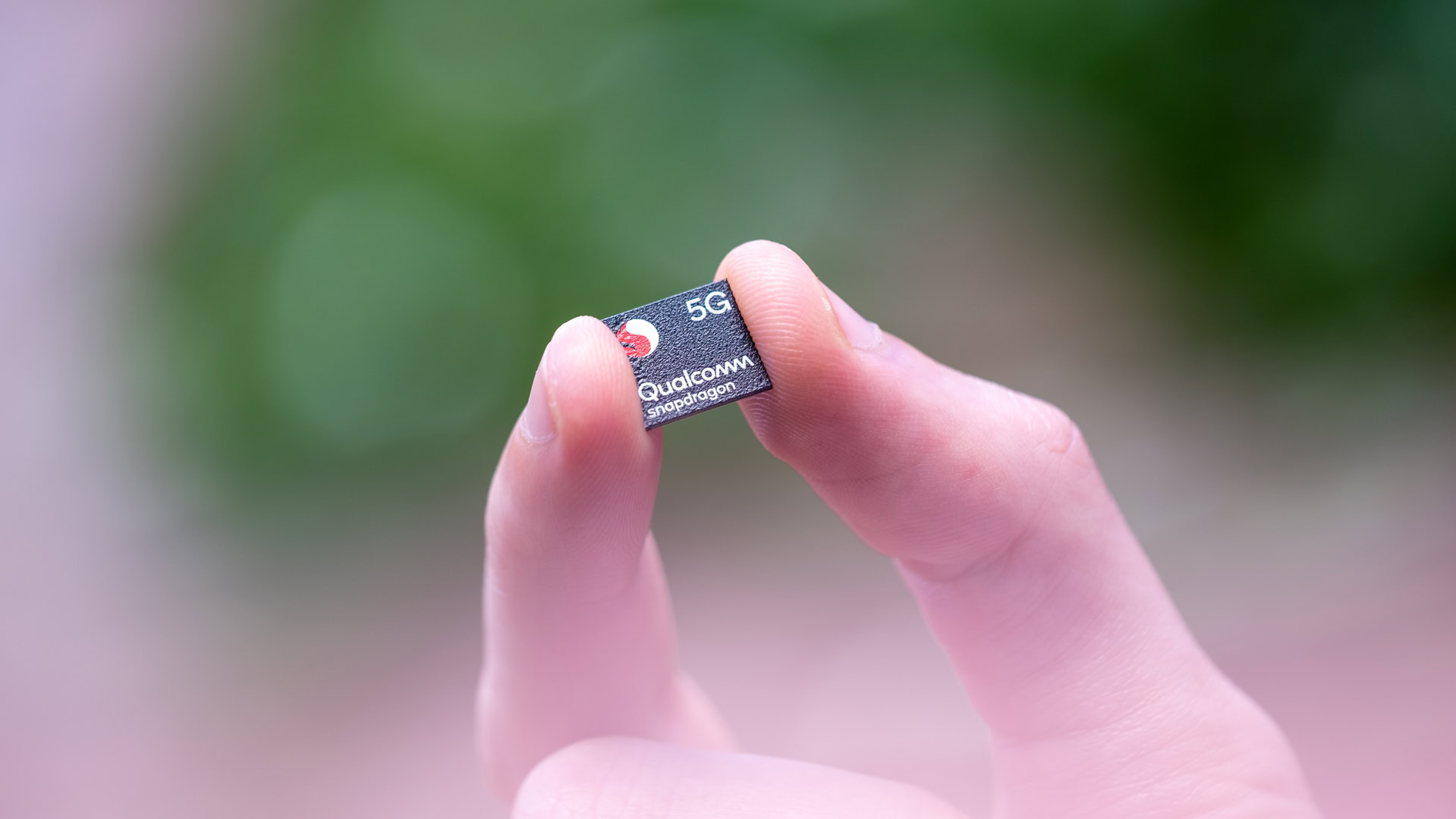
Qualcomm’s Snapdragon 7 series isn’t quite as straightforward as its flagship 8 series. This is due to the sheer number of them, as well as the older, lower-end chips crossing into Snapdragon 6 territory. The Snapdragon 7 series was originally conceived as an upper mid-range family of processors, but the Snapdragon 7 Plus Gen 2 blurs the line between flagship and mid-range like no other chip before it.
This chipset was announced in early 2023 and looks more like a Snapdragon 8 Plus Gen 1 processor than anything else. You’ve got the same TSMC 4nm design, a very similar CPU (one Cortex-X2, three Cortex-A710, four Cortex-A510), and what seems like a similarly powerful ISP. We do see some compromises though, such as a less impressive but still powerful GPU, the mid-tier Snapdragon X62 modem, and missing features like 8K recording.
The Snapdragon 7 Plus Gen 2 is basically 2022's flagship silicon with a few changes and a GPU downgrade.
We put a Snapdragon 7 Plus Gen 2 reference device through some benchmarks too, finding that the chipset was just as powerful as the Snapdragon 8 Gen 1 when it came to CPU performance. There was still a sizeable performance gap when it came to GPU-related tests, but it delivered rock-solid sustained performance. Most of these findings were reflected in our time with the POCO F5, the first commercial phone with this chip.
2022’s Snapdragon 7 Gen 1 preceded the Snapdragon 7 Plus Gen 2, and it was pretty impressive. Expect an octa-core CPU setup here, featuring four powerful Cortex-A710 cores and four Cortex-A510 cores. Qualcomm says the new chipset also delivered a 20% boost in GPU power over the Snapdragon 778G and a 30% improvement in machine learning performance. Other notable features include 200MP camera support, 4K HDR recording, and a 4nm design. Unfortunately, few phones with this chipset actually saw the light of day.
| Snapdragon 7 Plus Gen 2 | Snapdragon 7s Gen 2 | Snapdragon 7 Gen 1 | Snapdragon 780G | |
|---|---|---|---|---|
CPU | Snapdragon 7 Plus Gen 2 1x Cortex-X2 3x Cortex-A710 4x Cortex-A510 | Snapdragon 7s Gen 2 4x Cortex-A78 4x Cortex-A55 | Snapdragon 7 Gen 1 4x Cortex-A710 4x Cortex-A510 | Snapdragon 780G 2x Kryo 670 (Cortex-A78) 6x Kryo 670 (Cortex-A55) |
GPU | Snapdragon 7 Plus Gen 2 Adreno | Snapdragon 7s Gen 2 Adreno | Snapdragon 7 Gen 1 Adreno 662 | Snapdragon 780G Adreno 642 |
DSP | Snapdragon 7 Plus Gen 2 Hexagon | Snapdragon 7s Gen 2 Hexagon | Snapdragon 7 Gen 1 Hexagon | Snapdragon 780G Hexagon 770 |
Modem | Snapdragon 7 Plus Gen 2 Snapdragon X62 5G/LTE 5G - 4.4Gbps down, 1.6Gbps up | Snapdragon 7s Gen 2 Snapdragon X62 5G/LTE 5G - 2.9Gbps down | Snapdragon 7 Gen 1 Snapdragon X62 5G/LTE 5G - 4.4Gbps down, 1.6Gbps up | Snapdragon 780G Snapdragon X53 5G/LTE 5G - 3.3Gbps down, 3.6Gbps up |
Cameras | Snapdragon 7 Plus Gen 2 108MP single 64MP+36MP dual 32MP+32MP+32MP triple 200MP snapshot | Snapdragon 7s Gen 2 48MP single 32MP+16MP dual 16MP+16MP+16MP triple 200MP snapshot | Snapdragon 7 Gen 1 64MP single 64MP+20MP dual 25MP+25MP+25MP triple 200MP snapshot | Snapdragon 780G 84MP single 64MP+20MP dual 25MP+25MP+25MP triple 192MP snapshot |
Quick Charge | Snapdragon 7 Plus Gen 2 5 | Snapdragon 7s Gen 2 4+ | Snapdragon 7 Gen 1 4+ | Snapdragon 780G 4+ |
Bluetooth | Snapdragon 7 Plus Gen 2 5.3 | Snapdragon 7s Gen 2 5.2 | Snapdragon 7 Gen 1 5.2 | Snapdragon 780G 5.2 |
Process | Snapdragon 7 Plus Gen 2 4nm | Snapdragon 7s Gen 2 4nm | Snapdragon 7 Gen 1 4nm | Snapdragon 780G 5nm |
Qualcomm also announced the Snapdragon 7s Gen 2 in September 2023. Don’t let the name fool you as this isn’t a sequel to the Snapdragon 7 Gen 1. Instead, this chip is a step below the 7 Gen 1. You’ve still got a great CPU (four Cortex-A78 and four Cortex-A55) and a 4nm design, but this chip lags behind as far as connectivity and camera capabilities are concerned.
2o21’s Snapdragon 780G is another notable chipset in this tier, bringing a 5nm design and a respectable triple-tiered CPU. You’re looking at one Cortex-A78 CPU clocked at 2.4GHz, three Cortex-A78 CPUs clocked at 2.2GHz, and four Cortex-A55 CPU cores. The Snapdragon 780G also delivered an Adreno 642 GPU that’s said to offer performance in line with older flagships. That was pretty significant at the time as Qualcomm’s mid-range chips previously lagged far behind older flagship processors.
Notable Snapdragon 7 series phones
- HONOR 90
- Motorola RAZR 2023
- Nothing Phone 1
- POCO F5
Snapdragon 6 series — Value for money
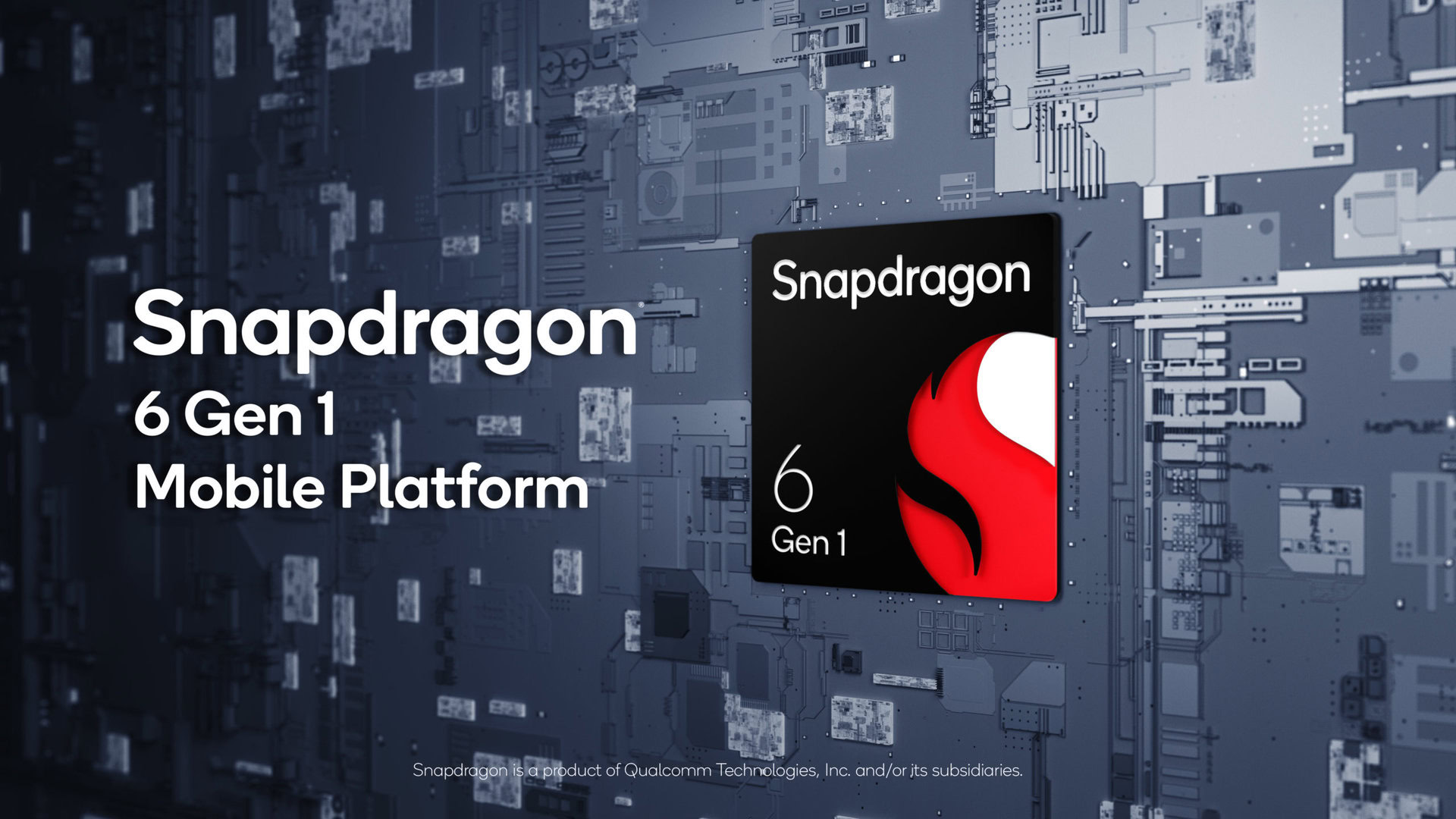
Where the Snapdragon 7 series tries to bridge the gap between mid-range and flagship, the Snapdragon 6 series is mostly focused on the ~$300 and under segment. And the most notable processor in this family is the Snapdragon 6 Gen 1.
The Snapdragon 6 Gen 1 is a significant step up from previous Snapdragon 6 series SoCs, offering a powerful CPU (4x Cortex-A78, 4x Cortex-A55) and an improved Adreno GPU. In fact, Qualcomm claims a 40% and 35% performance boost over the Snapdragon 695’s CPU and GPU respectively. Other notable features include a 4nm design, 200MP snapshot support, and 4K video capture.
| Snapdragon 6 Gen 1 | Snapdragon 695 | Snapdragon 690 | Snapdragon 680 | |
|---|---|---|---|---|
CPU | Snapdragon 6 Gen 1 4x Cortex-A78 4x Cortex-A55 | Snapdragon 695 2x Kryo 660 (Cortex-A78) 6x Kryo 660 (Cortex-A55) | Snapdragon 690 2x Kryo 560 (Cortex-A77) 6x Kryo 560 (Cortex-A55) | Snapdragon 680 4x Kryo 260 (Cortex-A73) 4x Kryo 260 (Cortex-A53) |
GPU | Snapdragon 6 Gen 1 Adreno | Snapdragon 695 Adreno 619 | Snapdragon 690 Adreno 619L | Snapdragon 680 Adreno 610 |
RAM | Snapdragon 6 Gen 1 LPDDR5 | Snapdragon 695 LPDDR4X | Snapdragon 690 LPDDR4X | Snapdragon 680 LPDDR4X |
DSP | Snapdragon 6 Gen 1 Hexagon | Snapdragon 695 Hexagon 686 | Snapdragon 690 Hexagon 692 Hexagon Tensor Accelerator | Snapdragon 680 Hexagon 686 |
Modem | Snapdragon 6 Gen 1 X62 5G 2.9Gbps down TBC up | Snapdragon 695 X51 5G 2.5Gbps down 0.9Gbps up | Snapdragon 690 X51 5G 2.5Gbps down 0.9Gbps up | Snapdragon 680 X11 4G 390Mbps down 150Mbps up |
Cameras | Snapdragon 6 Gen 1 48MP single 25MP+16MP dual 13MP+13MP+13MP triple 200MP snapshot | Snapdragon 695 32MP single or 16MP dual 192MP snapshot | Snapdragon 690 32MP single or 16MP dual 192MP snapshot | Snapdragon 680 32MP single 16MP dual 13MP+13MP+5MP triple 64MP snapshot |
Quick Charge | Snapdragon 6 Gen 1 4+ | Snapdragon 695 4+ | Snapdragon 690 4+ | Snapdragon 680 3.0 |
Bluetooth | Snapdragon 6 Gen 1 5.2 | Snapdragon 695 5.2 | Snapdragon 690 5.1 | Snapdragon 680 5.1 |
Process | Snapdragon 6 Gen 1 4nm | Snapdragon 695 6nm | Snapdragon 690 8nm FinFET | Snapdragon 680 6nm |
The previous top-end processor in this series was the Snapdragon 695, being an incremental upgrade over 2020’s Snapdragon 690. The 695 brings a capable octa-core CPU (2x Cortex-A77 and 6x Cortex-A55), and an Adreno 619 GPU seen in the Snapdragon 750G. We also get 13MP triple camera support, 108MP single camera support, and Wi-Fi 6 connectivity. But the big disappointment here is that it lacks 4K video recording.
Qualcomm also launched the Snapdragon 680 at the same time as the 695, and this chip stands out from the above entries by being a 4G-only SoC. It seems to be derived from the older, budget Snapdragon 665 SoC, sharing features like old CPU cores (four Cortex-A73 and four Cortex-A53), the Adreno 610 GPU, Hexagon 686 DSP, and Quick Charge 3.0 fast charging. There are a couple of upgrades though, namely a much smaller 6nm manufacturing process and Bluetooth 5.1 support.
Notable Snapdragon 6 series phones
- OnePlus Nord N30
- POCO X4 Pro
- Redmi Note 11
- Samsung Galaxy A23
- Sony Xperia 10 IV
Snapdragon 4 series — Entry-level
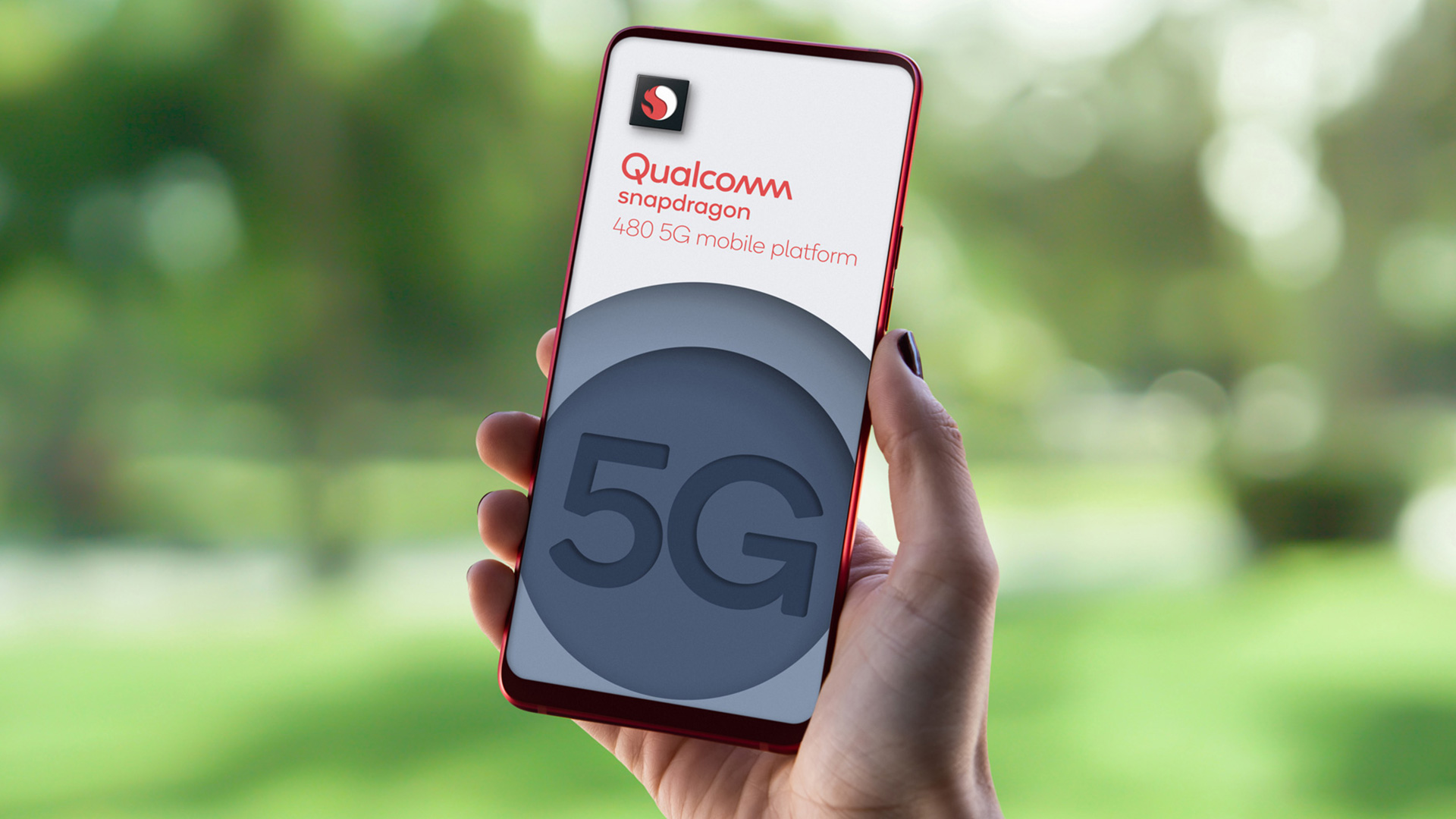
Now we come to the least capable Snapdragon series (aside from the shuttered/dormant Snapdragon 200 family), designed for cheap phones. But there’s good news here, as the latest Snapdragon 4 chipset is actually a massive improvement.
The Snapdragon 4 Gen 1 offers a 6nm design, a pretty capable CPU (2x Cortex-A78, 6x Cortex-A55), and a 10% faster GPU than the earlier Snapdragon 480. Otherwise, this SoC has quite a few things in common with the Snapdragon 695. We’ve got the same X51 5G modem, similar camera capabilities (no 4K recording here), 120Hz support at FHD+ display resolution, and Wi-Fi 5.
The Snapdragon 4 series lacks features like a powerful GPU and 4K recording but gains high refresh rate support and 5G.
Go down a notch and we’ve got the Snapdragon 480. This was the first 5G-enabled processor in the Snapdragon 4 series, being announced in early 2021. This is essentially a cut-back Snapdragon 750G chipset, featuring mmWave 5G support, the same Adreno 619 GPU, the same 8nm manufacturing process, Quick Charge 4 Plus tech, and support for FHD+ 120Hz displays.
| Snapdragon 4 Gen 1 | Snapdragon 480/480 Plus | Snapdragon 460 | |
|---|---|---|---|
CPU | Snapdragon 4 Gen 1 2x Cortex-A78 6x Cortex-A55 | Snapdragon 480/480 Plus 2x Kryo 460 (Cortex-A76) 6x Kryo 460 (Cortex-A55) | Snapdragon 460 4x Kryo 240 (Cortex-A73) 4x Kryo 240 (Cortex-A53) |
GPU | Snapdragon 4 Gen 1 Adreno | Snapdragon 480/480 Plus Adreno 619 | Snapdragon 460 Adreno 610 |
DSP | Snapdragon 4 Gen 1 Hexagon | Snapdragon 480/480 Plus Hexagon 686 | Snapdragon 460 Hexagon 683 |
Modem | Snapdragon 4 Gen 1 Snapdragon X51 5G 2.5Gbps down, 0.9Gbps up | Snapdragon 480/480 Plus Snapdragon X51 5G 2.5Gbps down, 660Mbps up | Snapdragon 460 Snapdragon X11 LTE 390Mbps down, 150Mbps up |
Cameras | Snapdragon 4 Gen 1 32MP single 25MP+13MP dual 13MP+13MP+13MP triple 108MP snapshot | Snapdragon 480/480 Plus 25MP single or 25MP+13MP dual 64MP snapshot | Snapdragon 460 32MP single or 22MP dual 192MP snapshot |
Quick Charge | Snapdragon 4 Gen 1 4+ | Snapdragon 480/480 Plus 4+ | Snapdragon 460 3.0 |
Bluetooth | Snapdragon 4 Gen 1 5.2 | Snapdragon 480/480 Plus 5.1 | Snapdragon 460 5.1 |
Process | Snapdragon 4 Gen 1 6nm | Snapdragon 480/480 Plus 8nm | Snapdragon 460 11nm FinFET |
We do see a few compromises though, such as older CPU cores (2x Cortex-A76 and 6x Cortex-A55), less impressive camera capabilities (no 4K recording, 64MP snapshot support), and slower 5G speeds. Still, this was a major upgrade for the 4 series at the time, which lacked more modern CPUs and 5G capabilities.
The Snapdragon 480 was succeeded by the Snapdragon 480 Plus in late 2021, but this is a mild upgrade at best rather than a major step up.
Notable Snapdragon 4 series phones
- Motorola Moto G62
- OnePlus Nord N100
- Nokia XR21
- Redmi Note 12 5G
That’s all for our Qualcomm Snapdragon SoC guide! Let us know your thoughts on the silicon giant’s portfolio in the comments. You can also check out our article charting the history of the Snapdragon 8 family.